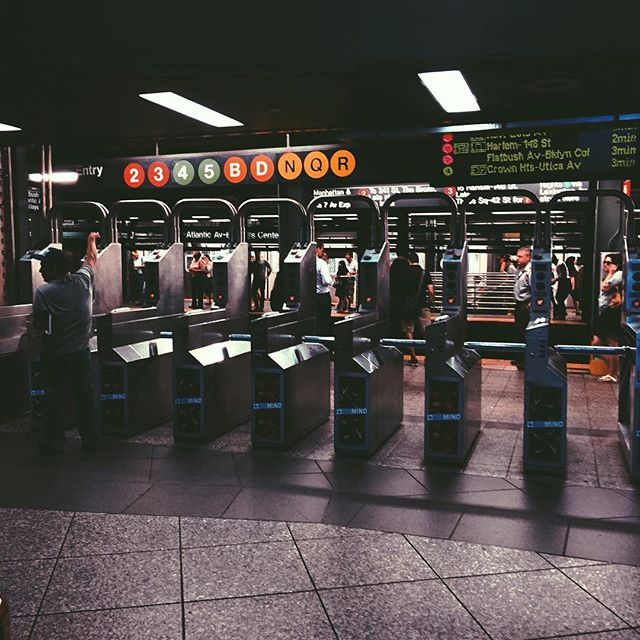Neighborhood Policing Program Extends To Subway System

BARCLAYS CENTER – Mayor de Blasio announced on Thursday that the Neighborhood Coordination Officer (NCO) Program will expand down into the subway system, starting with Transit District 12 in the Bronx and Transit District 30 in Brooklyn.
Neighborhood policing in our subways is something we’ve never seen before and it’s going to be a game changer for keeping this the safest big city in America. pic.twitter.com/z5Z2Ovu8n2
— Bill de Blasio (@NYCMayor) April 12, 2018
“Neighborhood policing works incredibly well in our streets, it’s going to work really great on our subway cars as well and on our platforms,” the Mayor said at a press conference at the Atlantic Avenue/Barclays Center subway station yesterday. “It’s going to change the lives of people all over the city.”
“Six million people ride the subway every day. Six million rides a day. And it is the essence for so many New Yorkers,” the Mayor said. “We want that ride to be safe and we want to keep making it safer.”
NCOs are officers assigned to specific neighborhoods or sectors in their precincts who dedicate their time in engaging with the local community, getting to know their neighborhood, and serving as direct contacts for residents and business owners to help solve problems in their area. The NCO program launched in May 2015 with 63 NYPD precincts currently participating and the remaining 13 on track to roll out the program by October 2018.
The subway NCOs’ photos, names, and email addresses will be posted at the stations where they are assigned. Transit District 12 in the Bronx covers stations along the 2 and 5 lines while Transit District 30 in Brooklyn covers stations along the 2, 3, 4, 5, A, C, B, D, Q, F, G, N, and R lines as well as the Franklin Avenue Shuttle.
The NCOs assigned to subway stations will receive training in homeless outreach, NYPD Chief of Department Terrence Monahan said, and will learn “how to talk to these people, get them help,” and inform them about available services.
“A homeless person has the same rights as everyone else on the train,” NYPD Chief of Transit Edward Delatorre added. “They don’t ever have to get off the train, but they’re not allowed to lay out on a bench just like any other rider…. All our NCOs have been trained by homeless outreach, by the Bowery Resident’s group, and by the homeless liaison unit for the transit authority as well.”
Delatorre broke down how the program will work underground. “We’re going to have two NCOs assigned to each sector. Within District 12 and District 30 we’re going to have three sectors, so there will be two NCOs per sector within these districts. That gives you six NCOs for each district.”
Two officers will be assigned to each of the three sectors within each district, he explained. “So what we have is a commitment of 20 officers fixed to these sectors, not allowed to leave these sectors, accountable for everything that happens in these sectors, to create relationships in these sectors with their MTA counterparts and to create relationships with the straphangers or the ridership that rides through the lines within these sectors,” Delatorre said.
“Think about this for a moment everyone—for all of you have spent a lot of your lives in the subway. The notion that you are going to know the names of the officers on your line, that if you have concerns…or a question you want answered about safety, you can literally walk up to them because now you know their names. Or you can email them because their email is there, and they’re going to respond to you personally,” the Mayor said.
The NCO program will roll out to other MTA stations over the course of the next twelve months. “By early next year, this approach—this neighborhood policing approach to our subways will be in every transit district,” the Mayor promised.